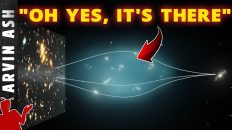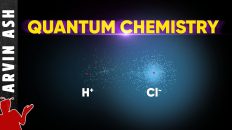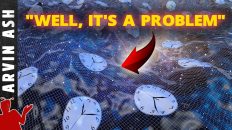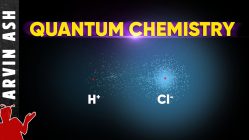Electroweak theory
How the Weak Force and Electromagnetism unite: Electroweak theory
How two fundamental forces unite: Electromagnetism & the Weak Force
As far as we know, there are 4 fundamental forces of nature. Gravity, responsible for keeping you planted to earth and the moon in orbit, the strong nuclear force responsible for keeping protons and neutrons bound together in the nucleus of atoms, the weak nuclear force responsible for some kinds of radiation, and electromagnetism which is responsible for light and chemistry.
But remarkably, at the moment of the Big Bang, all these 4 seemingly different forces were thought to be one and the same. But as temperatures cooled, and energies lowered, the forces separated into distinct interactions of their own.
Gravity is thought to have separated first at some of the highest energy densities and temperatures, then the strong force separated at cooler temperatures, what remained after that, at relatively lower energies and temperatures was electromagnetism and the weak force, as one combined force called the Electro-weak force.
Well, it turns out that the energies at which the electroweak force exists is something we can simulate in particle accelerators such as the Large Hadron collider in Geneva. And modern particle physics a has fairly robust theoretical basis that describes the nature of this combined force.
But how could these two forces be one and the same at a fundamental level because at the temperatures and conditions we live in today, they seem utterly different and utterly incompatible.
For example, electromagnetism is all around us in the form of light that we can see, and chemistry that we can observe. It has infinite range and is relatively strong.
The weak nuclear force on the other hand, is pretty weak, and something we can’t directly see. It’s effective at ranges smaller than the diameter of a proton. But this doesn’t mean it’s not important. Without it, we wouldn’t exist.
How is it that these two seemingly incompatible forces are one and the same at a fundamental level? It turns out that the key to uniting these two forces, is something that was only recently confirmed to exist – and that is the Higgs boson.
How the heck did we figure this out?
The best theory we have about the make up and functioning of the universe is represented by the standard model of particle physics. Think of this as the periodic table for elementary particles.
These particles along with their antimatter partners represent all the elementary particles we know about.
I want to draw your attention to the red particles, these are called gauge bosons. And they represent the mediating particles that carry 3 for the four fundamental forces of nature. Gluons mediate the strong nuclear force, photons mediate the electromagnetic force, and the W and Z bosons mediate the weak nuclear force. Gravity is the 4th force, that does not currently fit into this model.
You should be aware that there are actually two W bosons combined into one on this chart. There is a W+ and W- boson, which represents their electric charge.
You might ask, what is a mediating particle? The exchange of the virtual versions of these particles confer the appropriate force. So for example, when two electrons are near each other, their repulsion is due to the exchange of virtual photons. The simplest analogy is illustrated here. The basketballs represent virtual photons, the boat represents similarly charged electrons. The exchange of momentum is what results in a repulsion, similar to the way the exchange of momentum of the basketballs result in the two boats moving apart. Attraction is also mediated by photons, but it is analogous to the exchange of boomerangs, and brings the two boats closer together. This is a simple analogy of how oppositely charged particles attract. In either case, the mediating particle is virtual photons.
The weak nuclear force also works via the exchange of a virtual W or Z boson. Let’s take a look at perhaps the most important weak interaction. And that is the beta decay of a neutron. A neutron is composed of two down quarks and an up quark. An isolated Neutron that is not part of a nucleus is unstable. On average, within 15 minutes, one of its down quarks turns into a up quark by emitting a W- boson. This turns the Neutron into a proton.
This W- boson almost immediately decays into an electron and an anti-neutrino. So what we detect in this decay is the electron and the antineutrino. The virtual particle is not detectable.
The weak force is unique in this respect in that it is the only force which can change the identity of an elementary particle. In this case a down quark becomes an up quark, resulting in a Neutron into a proton. This is called a beta minus decay.
Another similar decay, called a beta plus decay, turns a proton into a neutron.
This kind of weak force decay is important in making atoms stable, and plays a big role in nuclear fusion reactions that power the sun. The sun wouldn’t shine without it, and we wouldn’t exist.
Let’s go back now to the chart of the standard model. You’ll notice that the mass of particles are expressed in terms of energy, using the mass-energy equivalence, E=MC2 championed by Albert Einstein.
You’ll notice one big problem in uniting the electromagnetic force with the weak force – and that is the fact that photons are massless, but the W and Z bosons are massive…very massive – their masses are about 80 and 90 Giga electron volts or GeV. This is over 80 times the mass of a proton, which has a mass of about 1 GeV or 1000 MeV.
So given the differences between these particles, and the fact that the weak force appears so different than electromagnetism, how did scientists realize they were controlled by the same guiding principles?
Scientists, including American Physicist Sheldon Glashow had noticed some clues indicating that the weak force and electromagnetism could be related. For one thing, even though electromagnetism is millions of times stronger than the weak force at large scales, the theoretical strengths of both forces appeared to be identical at very small lengths – about 1/1000th the width of a proton, suggesting a point where the two forces may merge as one.
In addition, theoretical models predicted an additional gauge boson, named the Z boson. This weak force boson would need to be a neutral, like photons are.
Glashow showed that an acceptable theory for the unification of the weak and electromagnetic interactions could be found where the two forces are treated together as one – as an electroweak force. And his model predicted 4 bosons that would mediate this force. These bosons were called W1, W2, W3, and B.
There were two problems with his model. First it predicted a third weak force neutral Boson, now called the Z boson, which was not predicted by any theory at that time. The first evidence of this particle only came much later in 1973, with the detection of something called weak neutral currents.
In addition, Glashow’s model only worked if all 4 Bosons were massless. It put both the weak force and electromagnetism on equal footing as both would have massless particles. One can call this masslessness, a kind of symmetry.
But ironically, this was a big problem because this did not fit observations. Something had to break this symmetry because the weak force was weak and interacted only at very small distances, indicating that its mediating bosons had to be massive.
Glashow could not find the right mechanism for making the 4 massless bosons from his electroweak theory into the 3 heavy weak force bosons and the massless photon.
You might ask, why do these weak gauge bosons have to be massive? Why does mass make a difference in the distance that the forces can act?
This has to do with the Heisenberg Uncertainty equation, which says that for virtual particles, the change in energy times the change in time has to be less than or equal to h/4pi.
If we substitute MC^2 for Energy, we can see that the greater the mass, the shorter the time of the virtual particle’s existence. So the short range of the weak force can be explained by the fact that massive virtual particles just don’t exist for very long.
Whereas for electromagnetism, since photons have no mass, they can exist theoretically for a long time, and thus interact over a long distance.
So, how do we reconcile the idea that photons and W and Z bosons are ultimately similar, and have a common origin, if there is such a huge discrepancy in masses? This remained mystery.
Glashow is even quoted to have said, “It’s a stumbling block we must overlook.” In other words, he thought his idea was right, even though it did not fit the observed data.
Three years later in 1964, Robert Brout and Francois Englert in Brussels and Peter Higgs at the University of Edinburgh developed a mechanism whereby mass could be given to elementary particles while maintaining a meaningful theory. The Brout-Englert-Higgs (BEH) mechanism employed the properties of a field (what is now called the Higgs field) to break the symmetry, and it predicted another massive particle, the Higgs boson.
In 1967 and 1968, Pakistani physicist Abdus Salam and American physicist Steven Weinberg independently took the ideas of the Higgs mechanism, and combined them with Glashow’s ideas to show how Glashow’s 3 weak force mediating particles could gain mass, while the photon of electromagnetism could remain massless, in the same theoretical framework.
This is the basis of what is now electro-weak theory. Glashow, Salam, and Weinberg were awarded the 1979 Nobel prize for their efforts. The three heavy weak bosons, the W+, W- and Z boson where not actually discovered until 1983 at CERN. This discovery was awarded the 1984 Nobel prize.
So now the question is, how does the Higgs mechanism give rise to masses in the 3 weak force particles, but not the photon.
Two illustrate this, I am going to show a diagram that depicts the Higgs potential. The Higgs mechanism can, in a very simplified way be understood by considering the Higgs potential. The Higgs potential gives the Higgs field the possibility of changing its effects.
At energy scales above 160 GeV, the Higgs potential looks like this. This does not do anything, because at the origin, Higgs field interactions do not result in mass, and all symmetries are intact.
However, at energies below about 160 GeV, the point at which electroweak interaction breaks down into two distinct interactions, the weak and electromagnetic, the Higgs potential begins to look much different. It looks more like this graphic. This is referred to as the Mexican hat potential.
The Z axis is energy, and the X and Y axes indicate the vacuum expectation value. This vacuum expectation value becomes non zero below 160GeV. Vacuum expectation value is like a value of the Higgs field. This non zero expectation value is what gives particles that interact with the Higgs field, mass.
As I’ve said before, all particles prefer to be at their lowest energy state. At energies of more than 160 GeV, the minimum of the Higgs potential is at the origin where the vacuum expectation value is zero. In other words, everything is massless.
But at energies below 160 GeV, the minimum vacuum expectation value is not at the origin. It is not zero, thus particles fall into the new minima. In other words, they obtain mass.
You might ask, ok why aren’t all the 4 particles including the photon massive, if this Mexican hat potential applies to all four Glashow particles?
Well, to put it very simply, this has to do with the way the 4 particles interact with the Higgs potential. The simplistic explanation is that the photon remains at the bottom groove of the Mexican hat and does not have any other movement. It can freely move around this groove without needing any energy. And as Einstein’s equation E=mc^2 says, 0 energy means 0 mass.
The other three particles however interact with the Higgs potential differently. They oscillate around the low point of the potential. This interaction with the Higgs potential requires energy as they try to climb the potential. Again, energy is equal to mass, and this is how they gain mass.
So why is the electroweak force important? You have to realize that the reason we are where we are today in our understanding of particles and forces is due, in no small part, to the search for the Higgs Boson which was needed to explain the Higgs mechanism, that united the weak force with Electromagnetism, even though the two forces seemed utterly different.
And this gives us hope that the next step in the unification, which would be to unite the Strong Nuclear force with the Electroweak force may also be possible, no matter how different these two forces appear to be right now. This unification would be the Grand Unified Theory or GUT.
And when we achieve this, the only missing piece of the puzzle towards a complete understanding of all forces would be a quantum level understanding of gravity – called quantum gravity. And when we unite the Grand Unified Theory with Quantum gravity, we will have the biggest prize in all of physics, and probably all of science, the holy grail – the mother of all theories – the Theory of Everything! Let’s keep going until we get there.







